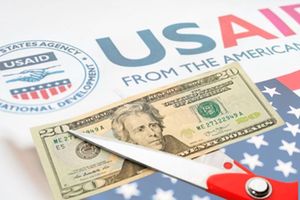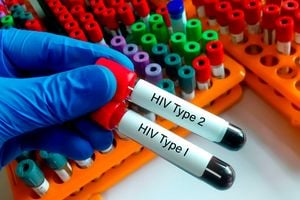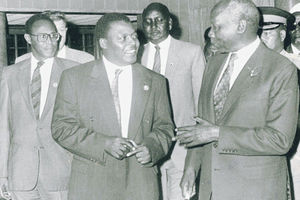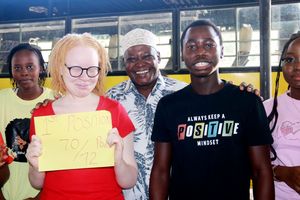With US funding cuts, ARVs will only be available to the highest bidder
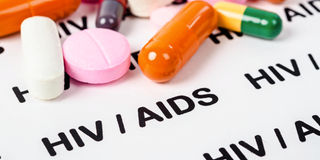
With the impending withdrawal of PEPFAR funding, the sustainability of Kenya’s HIV treatment programme is at risk.
For the past seven years, Rosemary Aoko has been buying antiretroviral (ARV) medication for two of her relatives. She found the free medication system too cumbersome, often plagued by stockouts, shortages of preferred drugs, and frequent rationing.
Her go-to facility has been the Centre for Tropical and Travel Medicine (CTTM) in Nairobi, known for importing ARVs from South Africa. For several years, she paid Sh9,000 per person for a 30-day ARV supply, a cost she admits was already a burden.
However, when she visited the pharmacy this month, she was informed that the price had risen to Sh10,700 for the same drug, Triumeq, one of the most effective HIV treatment regimens available.
According to the European Medicines Agency (EMA), Triumeq is a combination ARV regimen containing dolutegravir (50 mg), abacavir (600 mg), and lamivudine (300 mg). It is prescribed for adults, adolescents, and children weighing at least six kilogrammes. Before starting treatment, patients must be tested for the HLA-B*5701 gene, as its presence increases the risk of allergic reactions.
“It is at the same hospital that my two relatives started their treatment. The hospital has their records, they were placed on the drugs after several tests were done. This is why I can pick the drugs for them,” Ms Aoko says.
“ARVs are not like painkillers that you can just walk into a chemist and buy over the counter,” she explains. “You have to get a prescription and be monitored by a doctor.”
At the height of the HIV/Aids crisis in the 1990s, getting diagnosed with the virus in Kenya meant bracing for the worst. Other countries, including the United States, had started receiving antiretroviral therapies (ARVs).
This was out of reach for most patients in Kenya.
The launch of the US President's Emergency Plan for Aids Relief (PEPFAR) in 2003 changed the situation by delivering life-saving treatment to millions in the country.
Under the programme, ARVs became easily available to everyone who needed medication for free.
However, with the impending withdrawal of PEPFAR funding, the sustainability of Kenya’s HIV treatment programme is at risk.
Currently, over 1.4 million Kenyans living with HIV depend on free ARVs provided through donor-funded programmes. Without external support, the Ministry of Health may be forced to procure these drugs independently, potentially shifting the financial burden to patients.
While private healthcare facilities currently stock several ARVs, accessibility remains a significant concern.
If the government shifts ARV procurement from donor funding to direct purchase some questions arise. Will Kenyans be forced to buy their medication? And if so, at what cost? And where do they find the drugs?
Margaret Nyambura, a health lawyer at the Kenya Legal and Ethical Issues Network on HIV and Aids (KELIN), says before PEPFAR provided ARVs to patients at no cost, the drugs were expensive.
“Our data shows that before PEPFAR, a person could get a prescription from a doctor and purchase a monthly regimen from leading pharmaceutical outlets, which could at the time go for Sh50,000. And remember this was in 1990,” she explains.
“When PEPFAR came, the price of ARVs dropped to between Sh11,000 and Sh12,000,” notes the lawyer.
Ms Patricia Asero Ochieng, an HIV advocate who has lived with the disease since her diagnosis in 1990, says that when she tested positive for HIV in 1990, ARVs were going for between Sh50,000 to Sh70,000. This was before generic HIV medication, which is cheaper, became available.
“But now we even have injectable ARVs that cost as much as Sh4 million,” she observes.
In 2022, the first patient in Kenya was injected with ARV medication after being enrolled in a study at Aga Khan University Hospital that experts then said showed promise.
As the June 2025 deadline for PEPFAR's funding transition approaches, Kenya must act swiftly to establish a sustainable procurement plan. The Ministry of Health faces a critical choice—either secure funding to continue providing free ARVs or introduce a cost-sharing model to reduce the burden on 1.4 million patients and their families.
For now, uncertainty looms, and thousands of Kenyans living with HIV wait anxiously for answers.
Samuel Kinyanjui, the Executive Director at Aids Healthcare Foundation (AHF), says there are five boxes you have to tick before healthcare facilities let you buy life-saving pills.
“First you need to do an HIV test. And for adults, an ELISA (Enzyme-Linked Immunosorbent Assay) test, a blood test that detects antibodies or antigens to HIV helping to diagnose HIV infection, is recommended. It costs Sh2,600.
“For children, a PCR test, also known as a Polymerase Chain Reaction test detects the virus's genetic material (RNA or DNA) in the blood thereby allowing for early detection even before antibodies develop. It costs Sh11,500,” he explains.
The second step, according to the expert, is testing for CD4 count, which costs between Sh3,400 and Sh7,100. This can be done in many private health facilities and medical labs as well as a viral load test that costs Sh11,500.
A viral load, he explains, gives you an idea of how much of the HIV is in your body and the test measures the number of HIV copies in a millilitre of blood.
The test results help the doctor know what's happening with your infection and how well your treatment is working, which guides treatment choices.
Also, the viral load test predicts how fast the disease will progress, while other tests, like the CD4 count, indicate how much damage the virus has already caused.
A low viral load that can’t be detected means less than 20 copies and is always the goal of HIV treatment although this doesn't mean you're cured.
Thirdly, you will have to be subjected to what Dr Kinyanjui calls baseline medical tests and imaging, which he says are important before initiating ARVs.
There are four tests: a full haemogram, which costs around Sh1,100; a 'U&E' (urea and electrolytes) blood test, which costs around Sh2,500; a lipid profile test, which usually costs Sh3,500; and a chest X-ray to rule out TB, which costs around Sh2,500.
“The fourth step now has to do with ARVs and as you may know there are two types: Line 1 and Line 2 ARVs. A month’s supply of Line 1 goes for between Sh5,000 and Sh8,000 while Line 2 costs between Sh10,000 and Sh18,000,” Dr Kinyanjui explains.
“The fifth and final step before getting your ARVs is quarterly consultation costs that range from Sh1,500 to Sh5,000 per visit.”
All these services were being given for free to all the patients who were under the PEPFAR programme.
Dr Kinyanjui assures Kenyans that they can still buy ARVs from leading private facilities.
The expert also explains the difference between ‘generic’ and ‘original’ ARVS.
“Generic and original ARV medications contain the same active ingredients, are equally effective, and have the same safety and quality standards, but generics are usually cheaper because they don't require the same research and development costs as brand-name drugs,” he says.
This means that both generic and original ARVs work in the same way to combat HIV.
“They (generic ones) are just as effective as their brand-name counterparts,” he adds.

